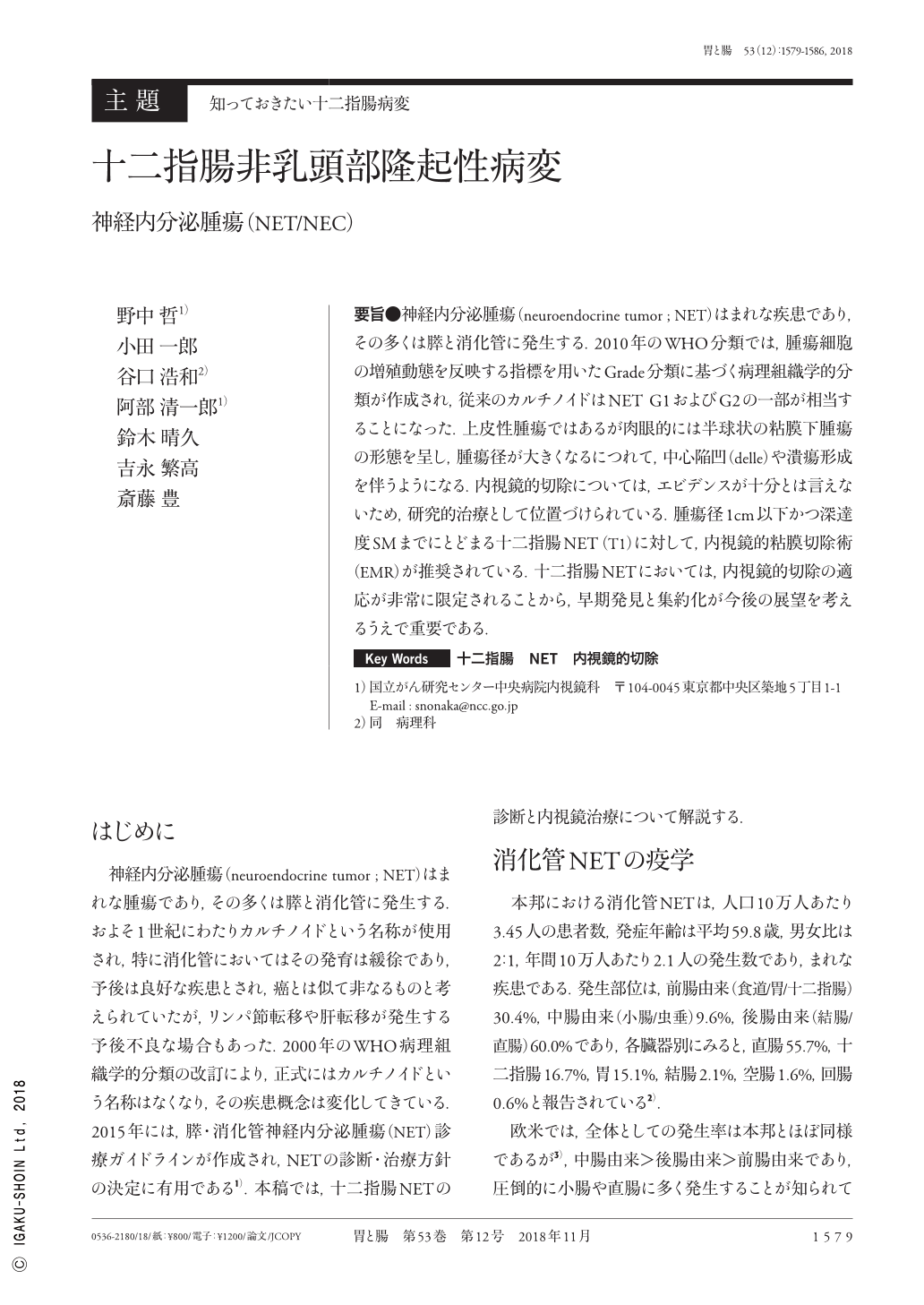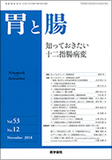Japanese
English
- 有料閲覧
- Abstract 文献概要
- 1ページ目 Look Inside
- 参考文献 Reference
- サイト内被引用 Cited by
要旨●神経内分泌腫瘍(neuroendocrine tumor ; NET)はまれな疾患であり,その多くは膵と消化管に発生する.2010年のWHO分類では,腫瘍細胞の増殖動態を反映する指標を用いたGrade分類に基づく病理組織学的分類が作成され,従来のカルチノイドはNET G1およびG2の一部が相当することになった.上皮性腫瘍ではあるが肉眼的には半球状の粘膜下腫瘍の形態を呈し,腫瘍径が大きくなるにつれて,中心陥凹(delle)や潰瘍形成を伴うようになる.内視鏡的切除については,エビデンスが十分とは言えないため,研究的治療として位置づけられている.腫瘍径1cm以下かつ深達度SMまでにとどまる十二指腸NET(T1)に対して,内視鏡的粘膜切除術(EMR)が推奨されている.十二指腸NETにおいては,内視鏡的切除の適応が非常に限定されることから,早期発見と集約化が今後の展望を考えるうえで重要である.
The gastrointestinal tract is the most common site for NETs(neuroendocrine tumors). Duodenal NETs are rare and occur less frequently compared with rectal NETs. In the most recent World Health Organization classification(modified in 2010), a grading system was implemented for histopathological findings of the Ki-67 labeling index and mitotic count ; then, the traditional carcinoid tumor corresponded to NET G1(partly G2). NET is usually recognized as an elevation in submucosal tumors despite being an epithelial tumor with a delle or ulceration on the tumor surface. ER(endoscopic resection)was regarded as the investigational treatment because of insfficient. However, ER has the potential to cure T1 duodenal NETs ≦1cm in size invading the submucosal layer owing to a low frequency of lymph node and distant metastasis. Indications for ER are limited ; therefore, early detection and centralization of care are important as future prospects to make sufficient evidence.

Copyright © 2018, Igaku-Shoin Ltd. All rights reserved.


